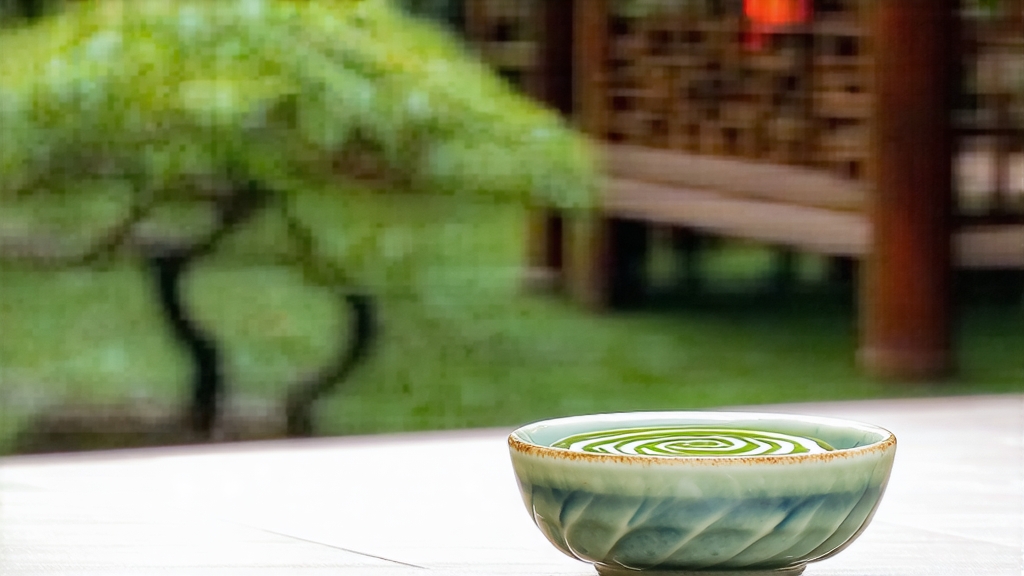
Biluochun, whose name translates literally to “Green Snail Spring,” is one of China’s ten most celebrated teas, yet it remains a delicate secret outside serious connoisseur circles. Grown exclusively in the microclimate of Dongting Mountain, an island rising from Taihu Lake in Jiangsu Province, this green tea seduces with the aroma of ripe peaches, the sweetness of fresh peas, and a shape so tightly curled that a single kilo contains more than sixty thousand buds. To understand Biluochun is to listen to a 1,200-year conversation between monks, emperors, tea gardeners, and the mist that never quite leaves the lake.
Historical whispers
The first reliable mention appears in the Tang Dynasty monograph “The Classic of Tea” by Lu Yu, but the name Biluochun was coined during the Kangxi reign (1661-1722). Legend says a tea picker ran out of space in her basket and tucked fresh buds between her breasts; body warmth released an intoxicating fragrance that startled passing scholars. Whether apocryphal or not, the story captures the tea’s signature trait: an explosive aroma that seems almost alive. Kangxi, visiting the region incognito, was served the tea, admired its snail-like curl, and renamed it from “Xia Sha Ren Xiang” (literally “scary fragrance”) to the more elegant “Biluochun.” Qing court records show annual tributes of 18 jin (9 kg) sent to Beijing in spring-loaded bamboo cylinders lined with orange peel to preserve moisture and perfume.
Micro-terroir: one mountain, two faces
Dongting Mountain is actually two peaks—Dongshan (East Mountain) and Xishan (West Mountain)—separated by a narrow strait. Dongshan’s south-facing terraces catch the first dawn reflection off Taihu, building amino acids that translate into umami. Xishan, circled by deeper water, enjoys longer evening humidity, accentuating floral volatiles. Within each face, tiny valleys create “fragrance pockets” where tea bushes interplant with peach, plum, and loquat trees. The fruit bloom coincides with tea budding; bees transfer pollen, and petals fall onto the leaf surface, contributing to the tea’s unmistakable orchard note. Soil is a crumbly granite-loam mix with excellent drainage, forcing roots to struggle and concentrate catechins.
Cultivar hierarchy
Only four clonal selections are legally permitted to bear the “Biluochun” geographical indication: Dongshan Xiaoye, Xishan Xiaoye, Fuding Dabaicha, and the newer hybrid 58. Xiaoye (“small leaf”) is prized for its needle-thin buds and low yield—barely 250 kg per mu (0.07 hectare)—but delivers the most complex cup. Fuding Dabaicha produces fatter buds, giving a fuller body and brighter liquor at the cost of some subtlety. Farmers often hedge by blending 70 % Xiaoye with 30 % Dabaicha to balance yield and fragrance while staying within GI rules.
The 24-hour choreography of hand-firing
Harvest begins when the lake mist still hangs at 80 % humidity and bud length is 1.5–2 cm—about the size of a sparrow’s tongue. Pickers use a “one bud, one leaf just unfolding” standard, dropping into shallow bamboo trays lined with gauze to prevent bruising. Within 30 minutes the leaves arrive at the village workshop where three masterful motions—shaking, killing-green, and spiraling—must fit into a single day.
- Withering: trays rest on racks in a drafty corridor for 60–90 minutes, reducing moisture by 10 % and softening cell walls.
- “Shaking fragrance”: the most poetic step. A 120 °C drum roaster is rubbed with a small cloth soaked in fresh peach juice. The picker tosses 250 g batches into the drum for exactly 38 seconds; rapid water evaporation ruptures membranes and releases glucosides that bond with peach esters, locking in the fruit note.
- Killing-green: temperature drops to 80 °C; leaves are pressed against the drum wall for 4 minutes, deactivating polyphenol oxidase and preserving jade color.
- Rolling & spiraling: while still at 50 °C, the master rolls leaves between his palms in concentric circles, coaxing the iconic spiral. Each 3-second roll is followed by a 2-second release to cool; 300 repetitions per batch.